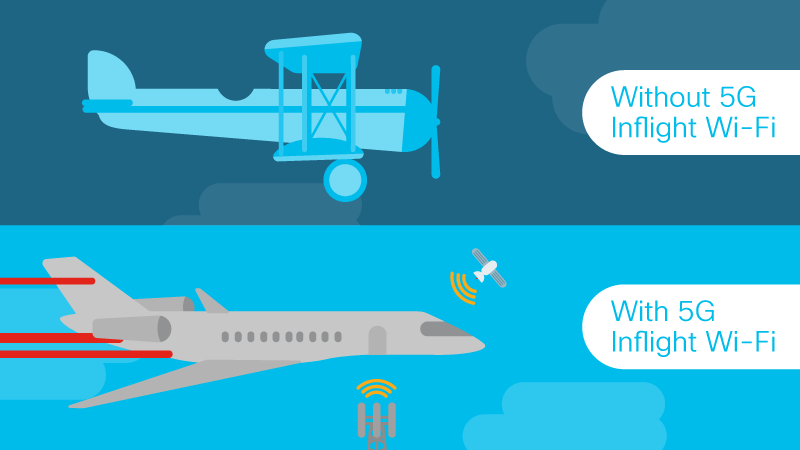5G networks are coming to the sky! Gogo, the inflight Internet company, just announced that it will be partnering with Cisco, wireless equipment supplier Airspan Networks, and radio frequency company First RF to deliver 5G capabilities to flight passengers. Gogo will develop this 5G system and network to provide better broadband connectivity, and it aims to make it available in 2021.
Many folks use the Internet on flights—business travelers rely on inflight Wi-Fi to work on projects and parents count on it to keep children amused. Hate it or love it, inflight Wi-Fi is the most sought-after airline offering, but many still feel like it’s not up to snuff. The Washington Post writes that inflight Wi-Fi can be spotty because there is simply not enough supply, and too much demand. The quality of inflight Wi-Fi can also vary by region, aircraft, airline, and more.
With Gogo introducing air-to-ground 5G networks for smaller jets, we can expect the connectivity to be more seamless, with high throughput and low latency.
"When we announced we were going to build a 5G network for aviation, we stated that we would leverage the expertise of U.S.-based companies to help us bring it to life," said Sergio Aguirre, president of Gogo Business Aviation. "The three partners we're announcing today are on the leading edge of wireless network technology and together we will bring the most capable network and systems in aviation."
How does it actually work?
Inflight Wi-Fi operates from two systems—either air-to-ground (ATG) or satellite Wi-Fi. ATG works with an antenna underneath the body of a plane, where it can link up to cell towers. As the plane moves, it connects with the nearest transmitter. Satellite Wi-Fi is more commonly used for transatlantic routes, or areas where you wouldn’t get connectivity with a cell tower. In this case, airplanes connect to orbiting satellites, which are linked to ground stations, through another antenna on top of the body.
Gogo’s 5G network will use 250 towers around the United States to transmit 2.4GHz spectrum band using the ATG system. 5G signals will then be beamed into the sky where airplanes can receive them. The Internet company states that this network will enable speeds ten times faster than what it can currently provide. Gogo will also continue to support 3G and 4G throughout the U.S. and Canada.
Cisco will provide the core network solutions to make inflight 5G Wi-Fi a reality. The company is contributing to the exciting new world of 5G with its automated, cloud-to-client, software-based networks. This spans beyond aircraft and into enterprise and service providers, including open roaming between cellular and Wi-Fi. This means that even if you don’t get a taste of inflight 5G, you may get to enjoy it on the ground pretty soon.
###
We welcome the re-use, republication, and distribution of "The Network" content. Please credit us with the following information: Used with the permission of http://thenetwork.cisco.com/.




